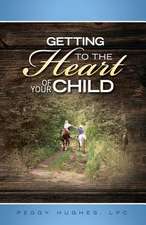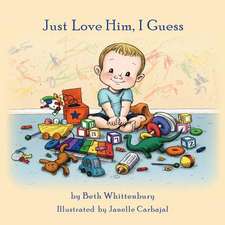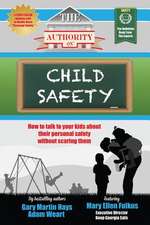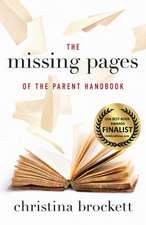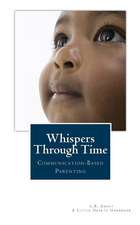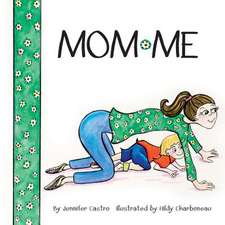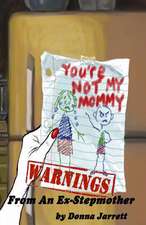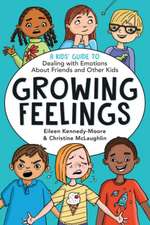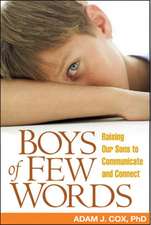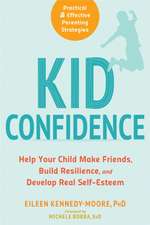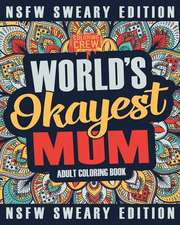Growing Friendships: A Kids' Guide to Making and Keeping Friends
Autor Dr. Eileen Kennedy-Moore, Christine McLaughlinen Limba Engleză Paperback – 11 mai 2023 – vârsta până la 9 ani
Friendships aren’t always easy for kids. Almost every child struggles socially at some time, in some way. Having an argument with a friend, getting teased, or even trying to find a buddy in a new classroom…although these are typical problems, they can be tough. Children want to fit in, but sometimes getting along with friends is complicated. Psychologist and children’s friendship expert Eileen Kennedy-Moore and parenting and health writer Christine McLaughlin give kids the answers they need to make and keep friends using five essential skills:
-Reaching Out to Make Friends
-Stepping Back to Keep Friends
-Blending In to Join Friends
-Speaking Up to Share With Friends
-Letting Go to Accept Friends
With research-based, practical solutions and plenty of true-to-life-examples of social skills in practice—presented in lighthearted humorous cartoons—Growing Friendships is a toolkit for both boys and girls as they make sense of the social environment around them. They will learn how to be open to friendship, choose kind friends, and most important, be a good friend.
Preț: 45.50 lei
Preț vechi: 56.95 lei
-20% Nou
Puncte Express: 68
Preț estimativ în valută:
8.71€ • 9.46$ • 7.32£
8.71€ • 9.46$ • 7.32£
Carte disponibilă
Livrare economică 04-16 aprilie
Livrare express 14-20 martie pentru 28.90 lei
Preluare comenzi: 021 569.72.76
Specificații
ISBN-13: 9781582705880
ISBN-10: 1582705887
Pagini: 192
Ilustrații: f-c gloss film cvr; b&w situational panelled cartoon illustrations throughout
Dimensiuni: 152 x 229 x 13 mm
Greutate: 0.21 kg
Editura: Aladdin/Beyond Words
Colecția Aladdin/Beyond Words
ISBN-10: 1582705887
Pagini: 192
Ilustrații: f-c gloss film cvr; b&w situational panelled cartoon illustrations throughout
Dimensiuni: 152 x 229 x 13 mm
Greutate: 0.21 kg
Editura: Aladdin/Beyond Words
Colecția Aladdin/Beyond Words
Notă biografică
Eileen Kennedy-Moore, PhD, is an internationally published author, psychologist, and mother of four. She is a trusted expert on parenting and children’s feelings and friendships who is frequently quoted in major magazines and newspapers and has been a featured guest on national radio and television shows. Her books have been translated into seven languages. She is a professor for the Great Courses, serves on the advisory board for Parents magazine, and writes the popular Growing Friendships blog for Psychology Today. Dr. Kennedy-Moore has a private practice in Princeton, New Jersey, where she works with adults, children, and families. Visit her online at EileenKennedyMoore.com.
Christine McLaughlin is a mom to three boys, as well as a prolific writer, editor, and author. With several hundred nonfiction articles to her credit—published in popular magazines and websites—her written work focuses mainly on parenting and health topics. She is the author of eight books including Growing Friendships and Growing Feelings (both written with Dr. Eileen Kennedy-Moore), The Dog Lover’s Companion to Philadelphia, and American Red Cross: Dog First Aid and American Red Cross: Cat First Aid. Learn more at ChristineMcLaughlin.net.
Christine McLaughlin is a mom to three boys, as well as a prolific writer, editor, and author. With several hundred nonfiction articles to her credit—published in popular magazines and websites—her written work focuses mainly on parenting and health topics. She is the author of eight books including Growing Friendships and Growing Feelings (both written with Dr. Eileen Kennedy-Moore), The Dog Lover’s Companion to Philadelphia, and American Red Cross: Dog First Aid and American Red Cross: Cat First Aid. Learn more at ChristineMcLaughlin.net.
Extras
Growing Friendships
![]()
![]()
Brandon wishes he had someone to play with at recess, but he doesn’t know how to connect with others. His body language—looking away, standing apart, even tuning everyone out by reading his book—tells them, “I don’t like you, and I don’t want to hang out with you!” That’s not what he’s feeling, but that’s the message he’s sending.
![]()
What can Brandon do to Reach Out to other kids and show them he’s interested in being friends?
Have you ever noticed what happens when you arrive at school? Kids say, “Hi!” And they don’t just announce “Hi!” to the air. They greet specific people. They look them in the eye, they smile, and they often say the other person’s name. Try this experiment: The next day you go to school, count how many greetings you hear. You may be surprised by how often kids greet each other.
![]()
Greeting people tells them you’re happy to see them. It’s also important to smile and say hi back when someone greets you. If you look away and say nothing or just mumble something, the other person might think you don’t want to be friends.
![]()
You may want to practice friendly greetings. They won’t instantly get you friends, but they open the door to friendship. The more you practice greetings, the more comfortable you’ll feel doing them.
Start by greeting family members. Then think of kids at school you can greet. Use your face and your body language to show that you’re happy to see them. Use their names to make the greeting personal. And be ready to respond in a friendly way when someone greets you.
![]()
Sometimes kids don’t want to greet others because they worry that they won’t get a response. They’re afraid of feeling foolish or getting rejected and being embarrassed. But you’ll stand out more if you don’t greet people.
You don’t have to be best friends with people to greet them. You just have to know them a little bit and think they’re nice. A friendly greeting takes only a few seconds but it goes a long way toward setting a positive tone and showing other kids that you’re interested in being friends.
What happens after “Hi!”? Keep doing friendly things to show that you like them. You can do these right after the greeting or later. Here are some ideas you can try:
1. Ask interested questions.
Asking questions shows someone you want to know more about them. The best questions to ask begin with what or how because they tend to get longer answers that can lead to a conversation. One or two questions is usually enough at one time. More than that gets annoying. You don’t want to turn the conversation into an interview!
![]()
![]()
Avoid asking why questions because they can sound mean. It can seem like you’re asking, “Why did you do such a dumb thing?!” even when you’re not.
2. Give an honest compliment.
It feels good to get a compliment, and we tend to like people who notice and appreciate our good qualities. Keep your eyes open for ways that you can compliment other kids. Compliments don’t have to be long or complicated, but they must be honest. If someone gives you a compliment, be sure to smile and say, “Thanks!”
![]()
![]()
3. Do a small act of kindness.
Being kind is a great way to start a friendship. An act of small kindness tells kids that you like them and it makes you feel good. Be careful not to give away money or favorite things of yours. If the act of kindness is too big, the other kids might feel pressured, and you might feel bad if they don’t return the favor.
![]()
![]()
![]()
1
Take First Steps
BRANDON’S CHALLENGE: FEELING ALONE
Brandon wishes he had someone to play with at recess, but he doesn’t know how to connect with others. His body language—looking away, standing apart, even tuning everyone out by reading his book—tells them, “I don’t like you, and I don’t want to hang out with you!” That’s not what he’s feeling, but that’s the message he’s sending.
What can Brandon do to Reach Out to other kids and show them he’s interested in being friends?
SAYING HELLO
Have you ever noticed what happens when you arrive at school? Kids say, “Hi!” And they don’t just announce “Hi!” to the air. They greet specific people. They look them in the eye, they smile, and they often say the other person’s name. Try this experiment: The next day you go to school, count how many greetings you hear. You may be surprised by how often kids greet each other.
Greeting people tells them you’re happy to see them. It’s also important to smile and say hi back when someone greets you. If you look away and say nothing or just mumble something, the other person might think you don’t want to be friends.
You may want to practice friendly greetings. They won’t instantly get you friends, but they open the door to friendship. The more you practice greetings, the more comfortable you’ll feel doing them.
Start by greeting family members. Then think of kids at school you can greet. Use your face and your body language to show that you’re happy to see them. Use their names to make the greeting personal. And be ready to respond in a friendly way when someone greets you.
WHY FRIENDLY GREETINGS MATTER
Sometimes kids don’t want to greet others because they worry that they won’t get a response. They’re afraid of feeling foolish or getting rejected and being embarrassed. But you’ll stand out more if you don’t greet people.
You don’t have to be best friends with people to greet them. You just have to know them a little bit and think they’re nice. A friendly greeting takes only a few seconds but it goes a long way toward setting a positive tone and showing other kids that you’re interested in being friends.
What happens after “Hi!”? Keep doing friendly things to show that you like them. You can do these right after the greeting or later. Here are some ideas you can try:
1. Ask interested questions.
Asking questions shows someone you want to know more about them. The best questions to ask begin with what or how because they tend to get longer answers that can lead to a conversation. One or two questions is usually enough at one time. More than that gets annoying. You don’t want to turn the conversation into an interview!
Avoid asking why questions because they can sound mean. It can seem like you’re asking, “Why did you do such a dumb thing?!” even when you’re not.
2. Give an honest compliment.
It feels good to get a compliment, and we tend to like people who notice and appreciate our good qualities. Keep your eyes open for ways that you can compliment other kids. Compliments don’t have to be long or complicated, but they must be honest. If someone gives you a compliment, be sure to smile and say, “Thanks!”
3. Do a small act of kindness.
Being kind is a great way to start a friendship. An act of small kindness tells kids that you like them and it makes you feel good. Be careful not to give away money or favorite things of yours. If the act of kindness is too big, the other kids might feel pressured, and you might feel bad if they don’t return the favor.
Recenzii
“Growing Friendships is the secret playbook you’ll wish you’d had when you were growing up. It’s packed with clever strategies that help kids handle the awkward, upsetting, and confusing social situations that happen to everyone. The fun cartoons make the advice light-hearted and easy to swallow.”
"Finally! A gap in the literature of friendship is filled. Growing Friendships is profound and subtle, clear and humorous. Anyone, of any age, who reads it will benefit."
"Kids who have social skill challenges often view friendship as an event or a product (Hi, I'm Michael. Let's be best friends and have a sleepover tonight.). They do not understand that friendship is a PROCESS with specific steps and sequences. Eileen Kennedy-Moore brings a wealth of experience, knowledge, and sensitivity to this issue. Her book Growing Friendships teaches kids the strategies they can use to establish--and maintain--peer relationships. Her unique and entertaining format holds the child's attention and makes these complex concepts understandable and within reach. It will be an invaluable tool for parents and professionals as they try to prevent their child from hearing the most dreaded words in childhood: 'Sorry, you can't sit there. That seat's taken.' "
"Funny, practical, and not at all preachy—Growing Friendships offers spot-on, research-based friendship advice for girls AND boys. Highly recommended! This must-read book is the Google Maps to friendship that every kid needs ”
“This book is so important! All children face friendship challenges at some point and Growing Friendships offers kids real help—and enough giggles to make the messages fun and memorable.”
“Some kids intuitively know how to make and manage friendships. Most don’t. Growing Friendships is a kid-friendly guide that uses simple language, engaging illustrations, and humor to help girls AND boys master the mysteries of social interaction.”
“Practical examples, real-life solutions, and playful humor make Growing Friendships a great resource. This insightful guide can help kids become competent problem solvers, cope with common social challenges, develop empathy, and build strong friendships.”
“This empowering and entertaining guide for kids shows ways to maneuver the often tricky, confusing, and challenging journey to build and maintain positive friendships. Not only do children learn strategies to make new friends, handle stressful situations, say ‘no’ to a pushy peer, and be a great team member, Growing Friendships makes the process fun and meaningful for the entire family.”
“Children’s friendships are a rollercoaster of emotion and conflict—fun and exciting when a friendship is going well, but challenging and even crushing when it’s not. Growing Friendships taps into the real-life problems kids face—from the friend who tells your secret to the one who likes you one day and won’t play with you the next. This spot-on guide navigates the slippery slope of inevitable difficulties with kid humor and compassion to demonstrate not only how to mend friendships or let them go, but also how to be a good friend. If you have school-age children they—and you—need this book.”
“The complexities of friendships in the school-aged years can be the most perplexing for students, parents, and educators alike. Growing Friendships gives research-based, concrete, and effective solutions for navigating these relationships. A tool every school should have!”
"For any child struggling with friendships, this book will be a source of comfort, guidance, and fun, with its wonderful illustrations and child-centered dialogue. Counselors, psychologists, and parents, this is a book to read with the children you care about."
Written for kids (specifically 6 -9 year olds) this is a book that parents will want to read as well. It offers some terrific advice for helping young people navigate the complicated waters of social interaction. These authors return to the basics to explain social and face-to-face communication skills to children who are living in a mostly virtual world. What appears to be silly dialogue between a cartoon cat and dog, actually contains some powerful lessons about how to approach and interact with other children. The fact that it makes these encounters humorous allows children to feel more comfortable about risking personal contact with other children. Making friends and keeping them, joining the fun, how to share, when to say NO, dealing with bullying, joining a group, and moving past conflict are all topics which are discussed in kid-friendly terms with real-world applications. In our fast-paced and disruptive world, we’re losing sight of the kitchen-table wisdom that children used to take refuge in. This book puts kids and their parents back in touch with basic, tried and true, social skills, and the ways in which those skills can be used.
Kennedy-Moore and McLaughlin highlight five skills—reaching out, stepping back, blending in, speaking up, and letting go—to help readers make and maintain friendships. Each chapter introduces a dilemma relating to one of 15 fictional kids: Aiden tries too hard to be funny, Susan assumes that others are being mean behind her back, and Mackenzie has trouble joining a group. Mingus’s cartoon spot illustrations and comics sequences add humor and help illustrate various points (such as the “power difference” involved in bullying, versus other social conflicts). Multiple-choice quizzes and reader-directed questions (“Do you have a habit of apologizing when you didn’t do anything wrong?”) invite children to apply these ideas to their own developing relationships.
A how-to book for making friends, is clear and entertaining as well as informative, could be a very useful tool. Many kids struggle with the myriad aspects of navigating the day-to-day complexity of interpersonal relationships. Combining real-life examples, attractive cartoon illustrations, and humorous commentary from a snarky cat and a friendly dog, this upbeat effort provides ample useful advice. Making friends and keeping them, dealing with bullying and distinguishing it from simple teasing, speaking up for oneself and others, being a good sport, figuring out how to join in a group activity (including choosing the right activity to join), and matching the tone of a conversation are just a few of the topics covered. The presentation is clear, reasonable, and specific enough to be practical, and it begins with very basic skills such as greeting others. Practice situations, including a couple where friends won't take no for an answer, provide opportunities to try new skills in low-stress situations. This handbook is highly recommended for high-functioning autistic children as well as anyone who suffers from social awkwardness. The cover depicts both a white and a black child. The simple chapter format makes it possible to just practice certain skills without having to read through the entire work. A fun handbook for any child who has ever wanted another friend but been uncertain how to accomplish that. (Nonfiction. 8-12)
For children and preteens, perhaps no other aspect of life is as stressful as making and maintaining friendships. The author team of Kennedy-Moore and McLaughlin offers sound advice from the perspectives of psychologist, parent, blogger, and therapist. Using fun cartoons, relatable stories, metaphors, and bulleted summaries, this provides basic skills training for kids looking to widen their social circles. From reaching out to make initial contact with potential friends, through navigating tricky situations and mitigating arguments, myriad issues are described. Readers are encouraged not to just follow prescribed advice but to consider the feelings of others and to use their own judgment in choosing a course of action. Many of these skills are important lifelong lessons that will benefit readers long after their adolescence. While skills like saying no and compromising may be intuitive to some, for many others, particularly those in their awkward preteens, the advice in the book will be invaluable. This is an authoritative and appealing resource for children working on fitting in and finding a tribe. — Erin Anderson
This guide to friendships is simply illustrated and full of useful information. Written by a child psychologist and a professional parenting writer, this book goes over basic information explaining how body language and verbal signals can help signal the progression of a friendship. It provides basic coping skills for anxiety so that readers can attract more friends. There is also a section on bullying and learning to say no. The information is a lot to digest for a younger crowd, while the conflicts presented are too young for a middle grade audience. Recurring dog and cat mascots are supposed to provide a bit of levity but just end up being diverting. The section on blending in may put off more independent and individualistic types, and the section on anxiety isn’t always clear about the feelings it’s trying to help children cope with. Overall, though, the information is accurate and helpful. VERDICT A decent guide for younger middle grade collections, even adults could learn something from this book.
"Finally! A gap in the literature of friendship is filled. Growing Friendships is profound and subtle, clear and humorous. Anyone, of any age, who reads it will benefit."
"Kids who have social skill challenges often view friendship as an event or a product (Hi, I'm Michael. Let's be best friends and have a sleepover tonight.). They do not understand that friendship is a PROCESS with specific steps and sequences. Eileen Kennedy-Moore brings a wealth of experience, knowledge, and sensitivity to this issue. Her book Growing Friendships teaches kids the strategies they can use to establish--and maintain--peer relationships. Her unique and entertaining format holds the child's attention and makes these complex concepts understandable and within reach. It will be an invaluable tool for parents and professionals as they try to prevent their child from hearing the most dreaded words in childhood: 'Sorry, you can't sit there. That seat's taken.' "
"Funny, practical, and not at all preachy—Growing Friendships offers spot-on, research-based friendship advice for girls AND boys. Highly recommended! This must-read book is the Google Maps to friendship that every kid needs ”
“This book is so important! All children face friendship challenges at some point and Growing Friendships offers kids real help—and enough giggles to make the messages fun and memorable.”
“Some kids intuitively know how to make and manage friendships. Most don’t. Growing Friendships is a kid-friendly guide that uses simple language, engaging illustrations, and humor to help girls AND boys master the mysteries of social interaction.”
“Practical examples, real-life solutions, and playful humor make Growing Friendships a great resource. This insightful guide can help kids become competent problem solvers, cope with common social challenges, develop empathy, and build strong friendships.”
“This empowering and entertaining guide for kids shows ways to maneuver the often tricky, confusing, and challenging journey to build and maintain positive friendships. Not only do children learn strategies to make new friends, handle stressful situations, say ‘no’ to a pushy peer, and be a great team member, Growing Friendships makes the process fun and meaningful for the entire family.”
“Children’s friendships are a rollercoaster of emotion and conflict—fun and exciting when a friendship is going well, but challenging and even crushing when it’s not. Growing Friendships taps into the real-life problems kids face—from the friend who tells your secret to the one who likes you one day and won’t play with you the next. This spot-on guide navigates the slippery slope of inevitable difficulties with kid humor and compassion to demonstrate not only how to mend friendships or let them go, but also how to be a good friend. If you have school-age children they—and you—need this book.”
“The complexities of friendships in the school-aged years can be the most perplexing for students, parents, and educators alike. Growing Friendships gives research-based, concrete, and effective solutions for navigating these relationships. A tool every school should have!”
"For any child struggling with friendships, this book will be a source of comfort, guidance, and fun, with its wonderful illustrations and child-centered dialogue. Counselors, psychologists, and parents, this is a book to read with the children you care about."
Written for kids (specifically 6 -9 year olds) this is a book that parents will want to read as well. It offers some terrific advice for helping young people navigate the complicated waters of social interaction. These authors return to the basics to explain social and face-to-face communication skills to children who are living in a mostly virtual world. What appears to be silly dialogue between a cartoon cat and dog, actually contains some powerful lessons about how to approach and interact with other children. The fact that it makes these encounters humorous allows children to feel more comfortable about risking personal contact with other children. Making friends and keeping them, joining the fun, how to share, when to say NO, dealing with bullying, joining a group, and moving past conflict are all topics which are discussed in kid-friendly terms with real-world applications. In our fast-paced and disruptive world, we’re losing sight of the kitchen-table wisdom that children used to take refuge in. This book puts kids and their parents back in touch with basic, tried and true, social skills, and the ways in which those skills can be used.
Kennedy-Moore and McLaughlin highlight five skills—reaching out, stepping back, blending in, speaking up, and letting go—to help readers make and maintain friendships. Each chapter introduces a dilemma relating to one of 15 fictional kids: Aiden tries too hard to be funny, Susan assumes that others are being mean behind her back, and Mackenzie has trouble joining a group. Mingus’s cartoon spot illustrations and comics sequences add humor and help illustrate various points (such as the “power difference” involved in bullying, versus other social conflicts). Multiple-choice quizzes and reader-directed questions (“Do you have a habit of apologizing when you didn’t do anything wrong?”) invite children to apply these ideas to their own developing relationships.
A how-to book for making friends, is clear and entertaining as well as informative, could be a very useful tool. Many kids struggle with the myriad aspects of navigating the day-to-day complexity of interpersonal relationships. Combining real-life examples, attractive cartoon illustrations, and humorous commentary from a snarky cat and a friendly dog, this upbeat effort provides ample useful advice. Making friends and keeping them, dealing with bullying and distinguishing it from simple teasing, speaking up for oneself and others, being a good sport, figuring out how to join in a group activity (including choosing the right activity to join), and matching the tone of a conversation are just a few of the topics covered. The presentation is clear, reasonable, and specific enough to be practical, and it begins with very basic skills such as greeting others. Practice situations, including a couple where friends won't take no for an answer, provide opportunities to try new skills in low-stress situations. This handbook is highly recommended for high-functioning autistic children as well as anyone who suffers from social awkwardness. The cover depicts both a white and a black child. The simple chapter format makes it possible to just practice certain skills without having to read through the entire work. A fun handbook for any child who has ever wanted another friend but been uncertain how to accomplish that. (Nonfiction. 8-12)
For children and preteens, perhaps no other aspect of life is as stressful as making and maintaining friendships. The author team of Kennedy-Moore and McLaughlin offers sound advice from the perspectives of psychologist, parent, blogger, and therapist. Using fun cartoons, relatable stories, metaphors, and bulleted summaries, this provides basic skills training for kids looking to widen their social circles. From reaching out to make initial contact with potential friends, through navigating tricky situations and mitigating arguments, myriad issues are described. Readers are encouraged not to just follow prescribed advice but to consider the feelings of others and to use their own judgment in choosing a course of action. Many of these skills are important lifelong lessons that will benefit readers long after their adolescence. While skills like saying no and compromising may be intuitive to some, for many others, particularly those in their awkward preteens, the advice in the book will be invaluable. This is an authoritative and appealing resource for children working on fitting in and finding a tribe. — Erin Anderson
This guide to friendships is simply illustrated and full of useful information. Written by a child psychologist and a professional parenting writer, this book goes over basic information explaining how body language and verbal signals can help signal the progression of a friendship. It provides basic coping skills for anxiety so that readers can attract more friends. There is also a section on bullying and learning to say no. The information is a lot to digest for a younger crowd, while the conflicts presented are too young for a middle grade audience. Recurring dog and cat mascots are supposed to provide a bit of levity but just end up being diverting. The section on blending in may put off more independent and individualistic types, and the section on anxiety isn’t always clear about the feelings it’s trying to help children cope with. Overall, though, the information is accurate and helpful. VERDICT A decent guide for younger middle grade collections, even adults could learn something from this book.

